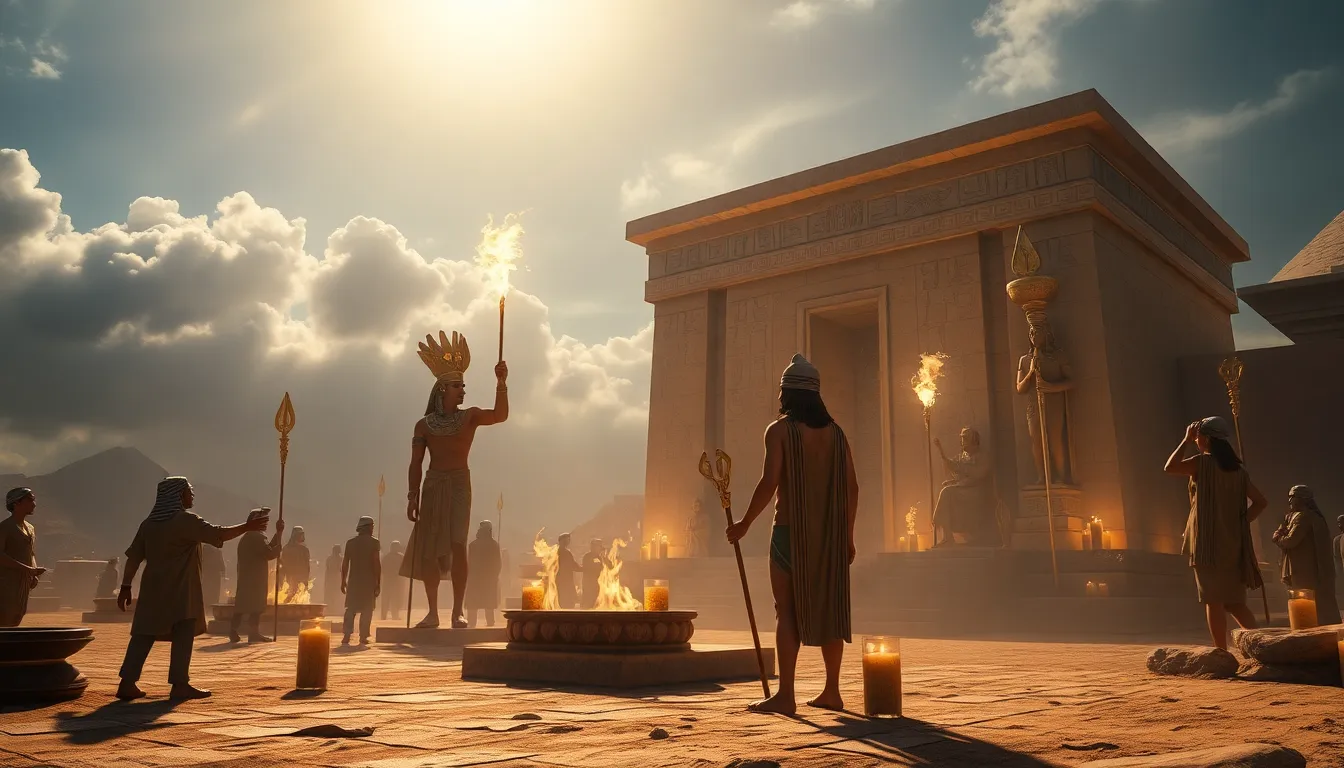The Rituals of the Festival of the Great Rebirth
I. Introduction
The Festival of the Great Rebirth is a significant event in ancient Egyptian mythology, celebrated with much enthusiasm and devotion. This festival symbolizes the cycle of life, death, and rebirth, echoing the eternal nature of the universe and the divine power of regeneration. The festival plays a crucial role in the cultural context of ancient Egypt, reflecting the people’s beliefs, values, and their relationship with the gods.
The purpose of this article is to explore the various rituals associated with the Festival of the Great Rebirth, delving into their historical significance, community involvement, and the rich symbolism embedded within these practices.
II. Historical Background
The origins of the Festival of the Great Rebirth can be traced back to the ancient myths surrounding Osiris, the god of the afterlife, and his resurrection. This festival was celebrated annually, marking the renewal of life and the agricultural cycle in the Nile Valley.
Over the centuries, the festival has evolved, adapting to changing religious beliefs and societal structures. Initially, the festival focused primarily on agricultural themes but later incorporated broader themes of resurrection and renewal, reflecting the Egyptian understanding of life and death.
Key figures associated with the festival include Osiris, Isis, and Horus. Osiris, in particular, embodies the essence of rebirth, having been resurrected by Isis after his murder by his brother Set. This legend forms the backbone of the festival’s rituals and celebrations.
III. Preparations for the Festival
In the weeks leading up to the Festival of the Great Rebirth, traditional practices are observed to prepare the community for the festivities. These preparations include:
- Cleansing rituals to purify the participants.
- Decorating temples and homes with symbols of rebirth, such as lotus flowers and images of Osiris.
- Gathering offerings and materials needed for the rituals.
The role of community involvement is paramount during this time, as families and neighbors come together to prepare for the festival. This collective effort fosters a sense of unity and shared purpose among the participants.
Symbolic meanings of pre-festival rituals often include themes of renewal, community bonding, and the anticipation of new beginnings, setting the tone for the celebrations to come.
IV. Opening Ceremonies
The opening ceremonies of the Festival of the Great Rebirth are marked by a series of inaugural rituals that set the stage for the festivities. These ceremonies often begin with a ceremonial procession, which is significant as it symbolizes the journey of the soul toward rebirth.
During this procession, participants dress in traditional clothing, often adorned with symbols representing Osiris and the afterlife. The importance of music and dance in the opening events cannot be overstated, as these elements elevate the spiritual atmosphere and engage the community in collective celebration.
V. Central Rituals of Rebirth
The central rituals of rebirth are the heart of the festival, encompassing a variety of practices that celebrate the themes of resurrection and renewal. These rituals often include:
- Ritualistic reenactments of the death and resurrection of Osiris.
- Water purification ceremonies, symbolizing the cleansing of the spirit and the advent of new life.
- Fire ceremonies that represent the transformative power of the divine.
The symbolism of fire, water, and earth elements in the rituals speaks to the Egyptians’ understanding of the natural world and its sacredness. Each element plays a vital role in the cycle of life, reinforcing the interconnectedness of all beings.
Participation in these rituals is inclusive, with various community members and leaders taking on different roles, from priests to everyday citizens, highlighting the festival’s community-oriented nature.
VI. Offerings and Sacrifices
During the Festival of the Great Rebirth, offerings and sacrifices are made to honor the gods and express gratitude for the blessings received. The types of offerings typically include:
- Food and drink, such as bread, beer, and fruits.
- Flowers and incense, symbolizing beauty and purity.
- Animal sacrifices, which were historically significant in ancient Egyptian culture.
The historical and cultural significance of these sacrifices lies in their role as a means of communication with the divine. They illustrate the community’s respect for the gods and their desire for favor in the coming year.
The role of gratitude and respect in these practices reinforces the idea that life is a gift, and honoring the divine is essential to maintaining harmony in the community.
VII. Closing Ceremonies and Reflections
The closing ceremonies of the Festival of the Great Rebirth serve to wrap up the festivities and reflect on the experiences shared. These concluding rituals often include:
- Final offerings to the gods, expressing thanks for the blessings of the festival.
- Community feasting, where participants share food and stories.
- Rituals of remembrance, where individuals recount personal and communal experiences of rebirth.
Community reflections post-festival are vital as they allow participants to share their insights and experiences, fostering a deeper sense of connection and understanding. The role of storytelling and memory in preserving the festival’s essence is crucial, ensuring that the tradition continues to thrive in the hearts and minds of future generations.
VIII. Conclusion
In conclusion, the Festival of the Great Rebirth holds profound significance in ancient Egyptian culture, embodying the themes of life, death, and resurrection. The rituals associated with the festival not only celebrate the divine but also strengthen community bonds, reinforcing a shared identity among participants.
As we reflect on the impact of these rituals on community identity, it becomes clear that such traditions are vital for cultural continuity. We encourage readers to participate in or learn about the Festival of the Great Rebirth, whether through direct experience or academic exploration, to appreciate the rich tapestry of beliefs that shape human history.




